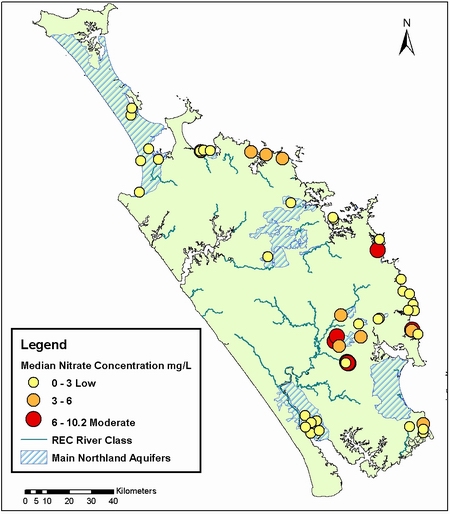Groundwater quality
Monitoring groundwater quality provides information on the effects of climate, land use and abstraction on groundwater quality. The majority of groundwater samples collected in 2010-2011complied with the New Zealand drinking water standards. However, some sites were found to have elevated levels of iron, manganese, bacteria and nitrate.
Elevated concentrations of iron and manganese found in different aquifers are commonly the result of natural processes, e.g. interaction with iron-rich sediments.
In 2010-11, 23 percent and 33 percent of the sites had median levels of iron and manganese above their aesthetic guidelines for human consumption, and one site at Whananaki North had median manganese levels above the health-related standard. There are no specific increasing trends in iron and manganese at the sites for the past 12 months.
Results of bacterial analysis indicate that 12 groundwater sites have bacteria present above the drinking water guideline value of <1/100mL. Four sites, located at Matapōuri Bay, Tauranga Bay, Te Ngaire Bay and Waipapakauri showed repeated bacterial contamination and the council is currently investigating different types of aquifers, i.e. sand and greywacke. Possible causes include on-site effluent disposal and bore construction.
Median nitrate concentrations at all sites were below the drinking water limit of 11.3mg/L-N, the highest nitrate level being measured at Whatitiri. The map below shows median levels of nitrate concentration at all groundwater quality monitoring sites.

Median nitrate levels in groundwater, 2010-2011.
